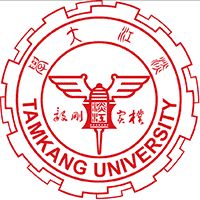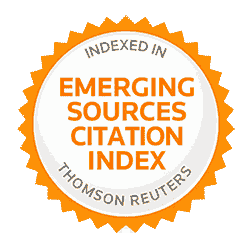Yu-Jen Lin1 and Hsien-Jen Lin 2
1Department of Industrial Engineering and Management, St. John’s University, Tamsui, Taiwan 251, R.O.C.
2Department of Applied Mathematics, Department of Finance and Actuarial Science, Aletheia University, Tamsui, Taiwan 251, R.O.C.
Received:
October 9, 2014
Accepted:
August 6, 2015
Publication Date:
September 1, 2015
Download Citation:
||https://doi.org/10.6180/jase.2015.18.3.01
ABSTRACT
This article is concerned with the problem of single-vendor single-buyer integrated supply chain inventory with price-dependent demand and product recovery. In our model, we assume that the vendor inspects each lot product in one production run in advance before delivering to the buyer, in which if defective items are unrecoverable, then he/she disposes of them; otherwise, which are immediately recovered for reuse. In addition, we consider that the demand rate is a function of unit price charged by the vendor to the buyer to widen applications to the model. The objective of this article is to minimize the joint total cost per unit time by simultaneously optimizing the buyer’s order quantity, the size of each shipment of the vendor, and the number of shipments from the vendor to the buyer in one production run. Furthermore, an algorithmic procedure of finding the optimal solution is developed, and finally, some numerical examples are given to illustrate the results.
Keywords:
Inventory, Lot Sizing, Price-dependent Demand, Defective Items
REFERENCES
- [1] Schrady, D. A., “A Deterministic Inventory Model for Repairable Item,” Naval Research Logistics Quarterly, Vol. 14, pp. 391398 (1967). doi: 10.1002/nav.38001 40310
- [2] Nahmias, N. and Rivera, H., “A Deterministic Model for a Repairable Item Inventory System with a Finite Repair Rate,” International Journal of Production Research, Vol. 17, No. 3, pp. 215221 (1979). doi: 10. 1080/00207547908919609
- [3] Mabini, M. C., Pintelon, L. M. and Gelders, L. F., “EOQ Type Formulation for Controlling Repairable Inventories,” International Journal of Production Economics, Vol. 28, pp. 2133 (1992). doi: 10.1016/0925-5273(92) 90110-S
- [4] Inderfurth, K., de Kok, A. G. and Flapper, S. D. P., “Product Recovery in Stochastic Remanufacturing Systems with Multiple Reuse Options,” European Journal of Operational Research, Vol. 133, pp. 130152 (2001). doi: 10.1016/S0377-2217(00)00188-0
- [5] Teunter, R. H., “Economic Ordering Quantities for Recoverable Item Inventory Systems,” Naval Research Logistics, Vol. 48, pp. 484495 (2001). doi: 10.1002/ nav.1030
- [6] Koh, S. G., Hwang, H., Sohn, K. I. and Ko, C. S., “An Optimal Ordering and Recovery Policy for Reusable Items,” Computers & Industrial Engineering, Vol. 43, pp. 5973 (2002). doi: 10.1016/S0360-8352(02)000 62-1
- [7] Teunter, R. H. and Vlachos, D., “On the Necessity of a Disposal Option for Returned Products that can be Remanufactured,” International Journal of Production Economics, Vol. 75, pp. 257266 (2002). doi: 10. 1016/S0925-5273(01)00096-2
- [8] Teunter, R., “Lot-sizing for Inventory Systems with Product Recovery,” Computer & Industrial Engineering, Vol. 46, pp. 431441 (2004). doi: 10.1016/j.cie.2004. 01.006
- [9] Bayindir, Z. P., Dekker, R. and Porras, E., “Determination of Recovery Effort for a Probabilistic Recovery System under Various Inventory Control Policies,” Omega, Vol. 34, pp. 571584 (2006). doi: 10.1016/j. omega.2005.01.015
- [10] Mitra, S., “Revenue Management for Remanufactured Products,” Omega, Vol. 35, pp. 553562 (2007). doi: 10.1016/j.omega.2005.10.003
- [11] Mitra, S., “Analysis of Two-echelon Inventory System with Returns,” Omega, Vol. 37, No. 1, pp. 106115 (2009). doi: 10.1016/j.omega.2006.10.002
- [12] Teng, H. M., Hsu, P. H., Chiu, Y. and Wee, H. M., “Optimal Ordering Decisions with Returns and Excess Inventory,” Applied Mathematics and Computation, Vol. 217, pp. 90099018 (2001). doi: 10.1016/j.amc.2011. 03.107
- [13] Lin, H. J., “Two-echelon Stochastic Inventory System with Returns and Partial Backlogging,” International Journal of Systems Science, Vol. 46, No. 6, pp. 966 975 (2015). doi: 10.1080/00207721.2013.803633
- [14] Fleischmann, M., Bloemhof-Ruwaard, J. M., Dekker, R., van der Laan, E., van Nunen, J. A. E. E. and Van Wassenhove, L. N., “Quantitative Models for Reverse Logistics: a Review,” European Journal of Operational Research, Vol. 103, pp. 117 (1997). doi: 10.1016/ S0377-2217(97)00230-0
- [15] Guide Jr., V. D. R., Jayaraman, V., Srivastava, R. and Benton W. C., “Supply-chain Management for Recoverable Manufacturing Systems,” Interfaces, Vol. 30, No. 3, pp. 125142 (2000). doi: 10.1287/inte.30.3.125. 11656
- [16] Porteus, E. L., “Optimal Lot Sizing, Process Quality Improvement and Setup Cost Reduction,” Operations Research, Vol. 34, pp. 137144 (1986). doi: 10.1287/ opre.34.1.137
- [17] Paknejad, M. J., Nasri, F. and Affisco, J. F., “Defective Units in a Continuous Review (s, Q) System,” International Journal of Production Research, Vol. 33, pp. 27672777 (1995). doi: 10.1080/00207549508904844
- [18] Ouyang, L. Y. and Chang, H. C., “Impact of Investing in Quality Improvement on (Q, r, L) Model Involving Imperfect Production Process,” Production Planning and Control, Vol. 11, pp. 598607 (2000). doi: 10.1080/ 095372800414160
- [19] Tripathy, P. K., Wee, W.-M. and Majhi, P. R., “An EOQ Model with Process Reliability Considerations,” Journal of the Operational Research Society, Vol. 54, pp. 549554 (2003). doi: 10.1057/palgrave.jors.2601 540
- [20] Chung, K. L. and Hou, K. L., “An Optimal Production Run Time with Imperfect Production Process and Allowable Shortages,” Computers & Operations Research, Vol. 30, pp. 483490 (2003). doi: 10.1016/S0305-0548 (01)00091-0
- [21] Hou, K. L., “Optimal Production Run Length for Deterioration Production System with a Two-state Continuous-time Markovian Processes under Allowable Shortages,” Journal of the Operational Research Society, Vol. 56, pp. 346350 (2005). doi: 10.1057/palgrave. jors.2601792
- [22] Lin, H. J., “Reducing Lost-sales Rate on the Stochastic Inventory Model with Defective Goods for Mixtures of Distributions,” Applied Mathematical Modelling, Vol. 37, pp. 32963306 (2013). doi: 10.1016/j.apm. 2012.07.020
- [23] Ouyang, L. Y., Wu, K. S. and Ho, C. H., “An Integrated Vendor-buyer Inventory Model with Quality Improvement and Lead Time Reduction,” International Journal of Production Economics, Vol. 108, pp. 349 358 (2007). doi: 10.1016/j.ijpe.2006.12.019
- [24] Rahim, M. A. and Al-Hajailan, W. I., “An Optimal Production Run for an Imperfect Production Process with Allowable Shortages and Time-varying Fraction Defective Rate,” International Journal of Advanced Manufacturing Technology, Vol. 27, No. 1112, pp. 11701177 (2006). doi: 10.1007/s00170-004-2301-6
- [25] Rosenblatt, M. J. and Lee, H. L., “Economic Production Cycles with Imperfect Production Processes,” IIE Transactions, Vol. 18, pp. 4855 (1986). doi: 10.1080/ 07408178608975329
- [26] Goyal, S. K., “An Integrated Inventory Model for a Single Supplier-single Customer Problem,” International Journal of Production Research, Vol. 15, No. 1, pp. 107111 (1976). doi: 10.1080/00207547708943107
- [27] Banerjee, A., “A Joint Economic-lot-size Model for Purchaser and Vendor,” Decision Sciences, Vol. 17, pp. 292311 (1986). doi: 10.1111/j.1540-5915.1986. tb00228.x
- [28] Goyal, S. K., “A Joint Economics-lot-size Model for Purchaser and Vendor: a Comment,” Decision Sciences, Vol. 19, No. 1, pp. 236241 (1988). doi: 10.1111/ j.1540-5915.1988.tb00264.x
- [29] Goyal, S. K. and Nebebe, F., “Determination of Economic Production Shipment Policy for a Single-vendor-single-buyer System,” European Journal of Operational Research, Vol. 121, pp. 175178 (2000). doi: 10.1016/S0377-2217(99)00013-2
- [30] Kelle, P., Al-khateeb, F. and Miller, A. P., “Partnership and Negotiation Support by Joint Optimal Ordering/ Setup Policies for JIT,” International Journal of Production Economics, Vol. 8182, pp. 431441 (2003). doi: 10.1016/S0925-5273(02)00357-2
- [31] Ouyang, L. Y., Wu, K. S. and Ho, C. H., “Analysis of Optimal Vendor-buyer Integrated Inventory Policy Involving Defective Items,” International Journal of Advanced Manufacturing Technology, Vol. 29, pp. 1232 1245 (2006). doi: 10.1007/s00170-005-0008-y
- [32] Ho, C. H., Ouyang, L. Y. and Su, C. H., “Optimal Pricing, Shipment and Payment Policy for an Integrated Supplier-buyer Inventory Model with Two-part Trade Credit,” European Journal of Operational Research, Vol. 187, No. 2, pp. 496510 (2008). doi: 10.1016/j. ejor.2007.04.015
- [33] Lin, Y. J., “A Stochastic Periodic Review Integrated Inventory Model Involving Defective Items, Backorder Price Discount and Variable Lead Time,” 4OR - A Quarterly Journal of Operations Research, Vol. 8, No. 3, pp. 281297 (2010). doi: 10.1007/s10288-010- 0124-x
- [34] Lin, Y. J., Ouyang, L. Y. and Dang, Y. F., “A Joint Optimal Ordering and Delivery Policy for an Integrated Supplier-retailer Inventory Model with Trade Credit and Defective Items,” Applied Mathematics and Computation, Vol. 218, pp. 74987514 (2012). doi: 10. 1016/j.amc.2012.01.016
- [35] Ouyang, L. Y., Wu, K. S. and Ho, C. H., “Integrated Vendor-buyer Cooperative Models with Stochastic Demand in Controllable Lead Time,” International Journal of Production Economics, Vol. 92, pp. 255266 (2004). doi: 10.1016/j.ijpe.2003.10.016
- [36] Su, C. H., Ouyang, L. Y., Ho, C. H. and Chang, C. T., “Retailer’s Inventory Policy and Supplier’s Delivery Policy under Tow-level Trade Credit Strategy,” Asia Pacific Journal of Operational Research, Vol. 24, No. 5, pp. 613630 (2007). doi: 10.1142/S021759590700 1413
















